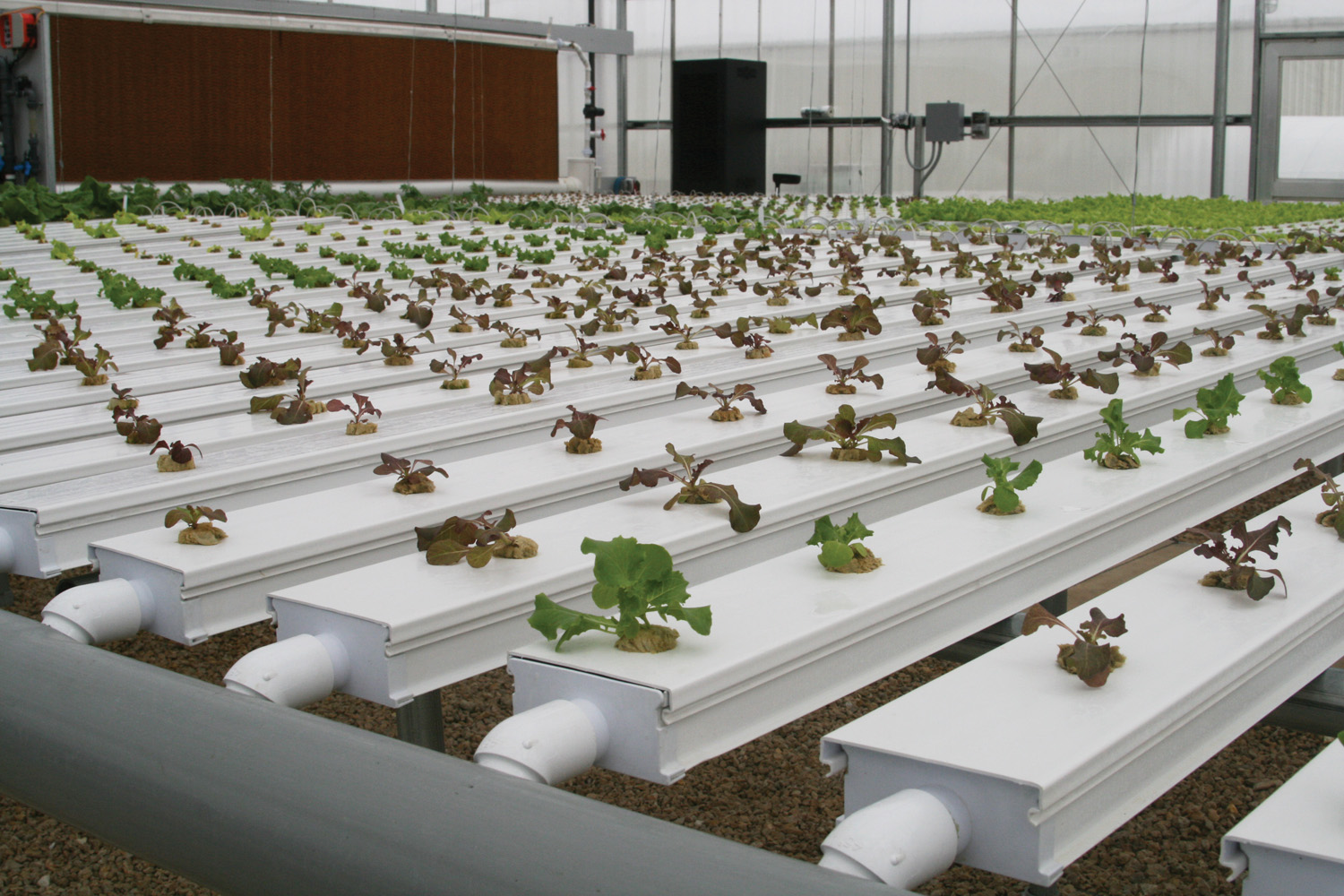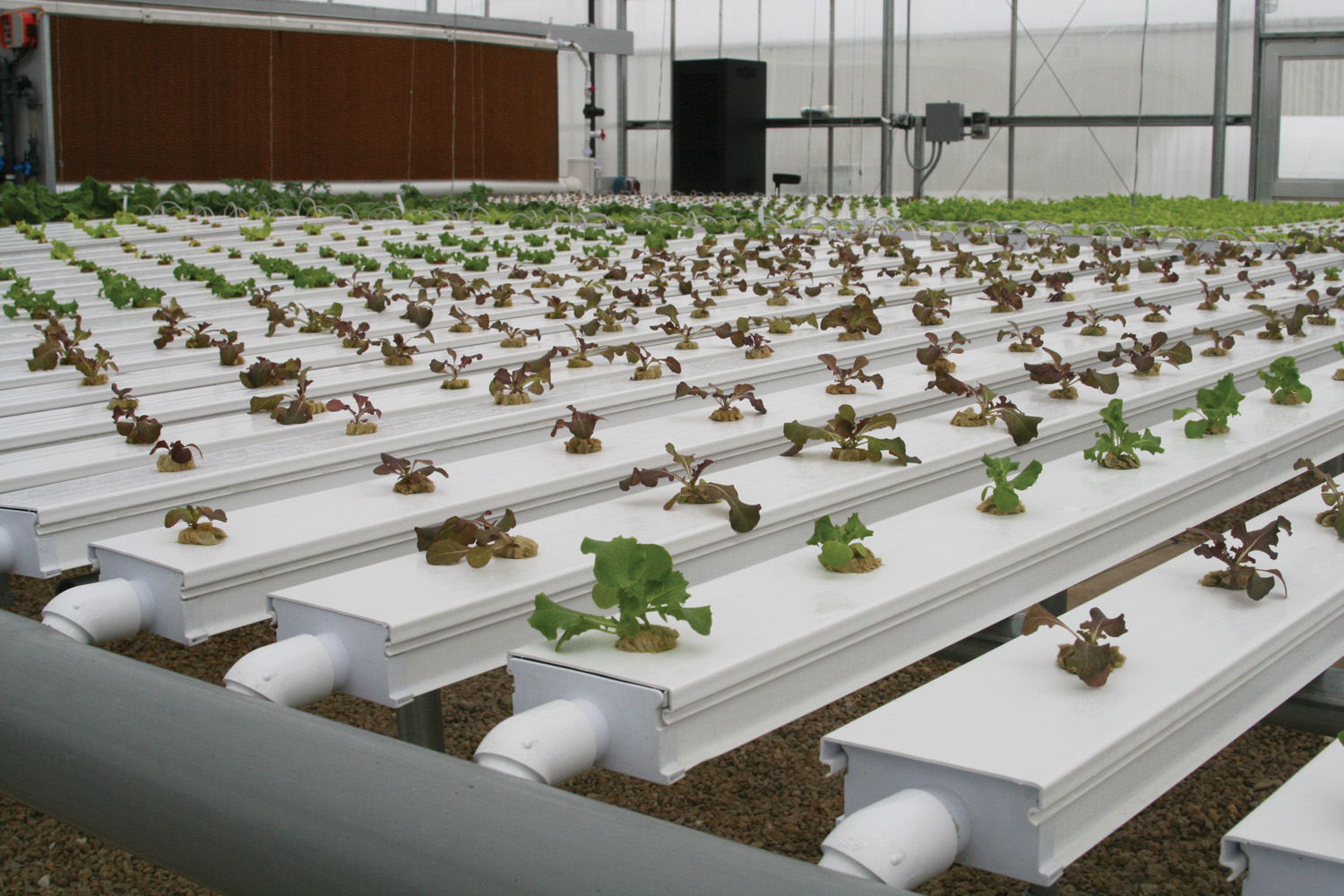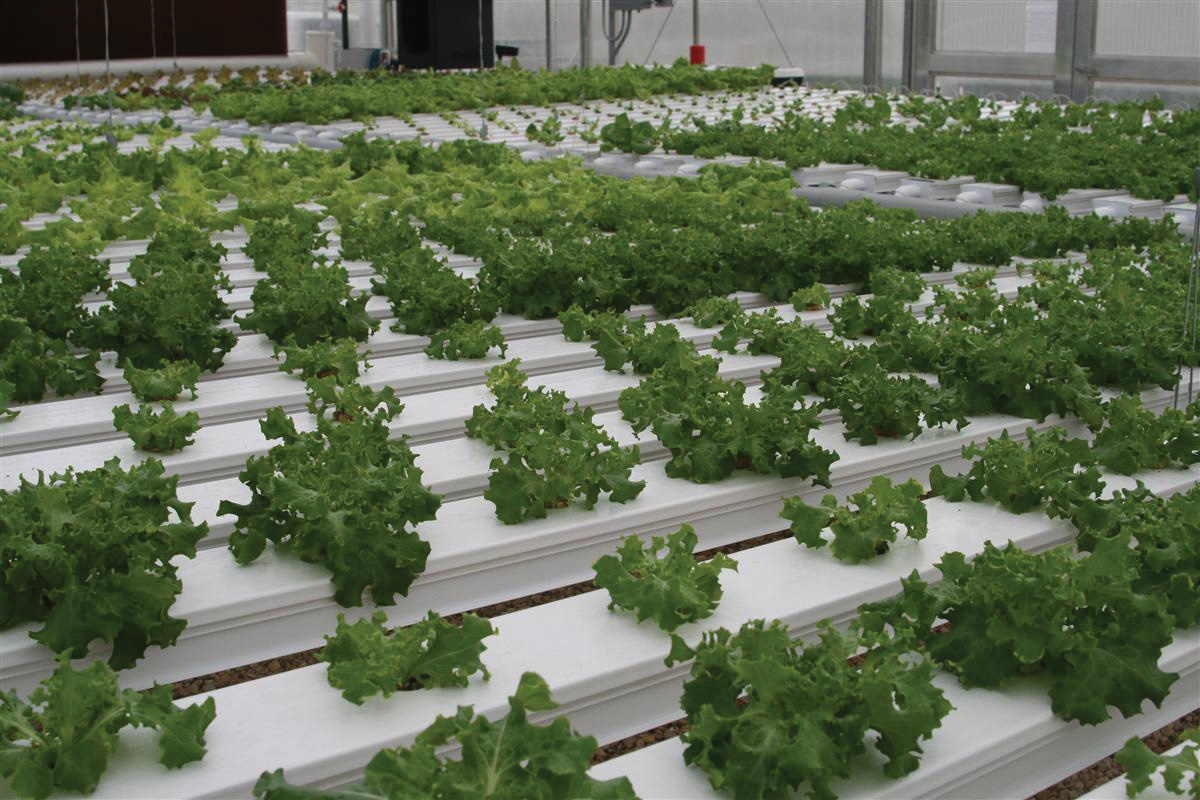
Hydroponics: Revolutionizing Greenhouse Growing
These days, greenhouse growers are faced with increased competition and the rising cost of labor, energy and crop inputs. To maximize return on their investment, growers are gradually diversifying their crops to include hydroponic vegetables. Smart growers have realized that sustainably produced fruits and vegetables can be a better investment and a more efficient use of time and resources.
Changing trends have increased opportunities for greenhouse growers to significantly increase sales and profits using their existing facilities operating year round. Today’s hydroponic growing methods have proven to make growing easier and more reliable than field growing. Labor costs and crop input costs are lower, and quality is much higher. Converting greenhouses from housing traditional plants to edible production can be very easy and low in cost. Nearly unlimited market opportunities and low-cost investment mean the future is bright for growers that choose to grow hydroponically in existing greenhouses.
Why Diversify?
The traditional greenhouse grower is comfortable producing bedding plants, flowering potted plants, potted foliage plants and cut flowers. The regimen most familiar to seasoned greenhouse devotees can be expensive and often financially challenging. Many of these growers are now faced with increased competition and the rising cost of labor, energy and crop inputs. To maximize return on their investment, growers are gradually diversifying their crops to include hydroponic vegetables — learning quickly that locally produced lettuce, tomatoes, cucumbers and peppers are in high demand.
Sustainably and locally grown food is a very hot topic. Many growers have realized that fruits and vegetables, grown year round in greenhouses, are a good investment.
Big-budget consumers, like school districts and restaurant chains, are making the switch to locally grown foods. States are increasing the percentage of fresh produce that makes up school lunches, helping students and faculty lead healthier lifestyles. Individual consumers are more interested in where their food comes from, and this interest will continue to grow and drive demand further upwards. With transportation costs skyrocketing and food safety concerns at an all time high, hauling food by truck, ship and air has become prohibitive. With all these compounding matters, it should be obvious that local is the way to go, but produce managers and buyers have somehow not been able to meet the increased demand for locally grown foods.
The Hydroponic Advantage
These changing trends have increased opportunities for greenhouse growers to significantly increase sales and profits using their existing facilities operating year round. But the hesitance with which growers are adding vegetables and fruit to their offerings is baffling. A pre-existing greenhouse can easily accommodate hydroponic growing with few adjustments.
Today’s hydroponic growing methods have proven to make growing easier and more reliable than field growing. Labor costs and crop input costs are lower, and quality is much higher. Hydroponic and greenhouse yields are commonly ten times that of the field yield for a one-crop-per-year harvest. In some cases, hydroponic and greenhouse yields have achieved one hundred times the field yield of Bibb lettuce. One grower in California grows 3.2 million heads per acre per year!
Soilless hydroponic growing offers savvy greenhouse growers the opportunity to increase the sales per square foot of their facilities by five or more times. To learn more about hydroponic growing, Dr. Lynette Morgan’s book Hydroponic Lettuce Production and Dr. Howard M. Resh’s Hydroponic Food Production (the 7th edition is out in August) are good places to start.
Converting greenhouses from housing traditional plants to edible production is now very easy and low in cost. Growers can convert their low- to medium-technology greenhouses to hydroponics without having to invest a substantial amount of money in a new greenhouse. Most growers, with some research and persistence, can tackle the project on their own.
A growing number of colleges and vocational schools have agricultural departments and curriculums catering to students with futures as passionate, qualified growers. Banks and other leading institutions that champion the locally produced food movement will stand and support this new generation of growers. Many growers, new and old, have received low-interest financing for their projects by said institutions that understand the economics behind these endeavors. From the introduction of corporate CSA programs to businesses providing locally grown food in lunchrooms, meetings and conferences, it is clear that growers are quickly gaining larger allies outside the agricultural industry.
The future is bright for growers that choose to grow hydroponically in existing greenhouses. Low-cost investment and nearly unlimited market opportunities have spurred perceptive growers to make the smart move to growing more edibles as a percentage of their total growing area. Will you make the same choice?
The future is bright for growers that choose to grow hydroponically in existing greenhouses.




 Video Library
Video Library 




















